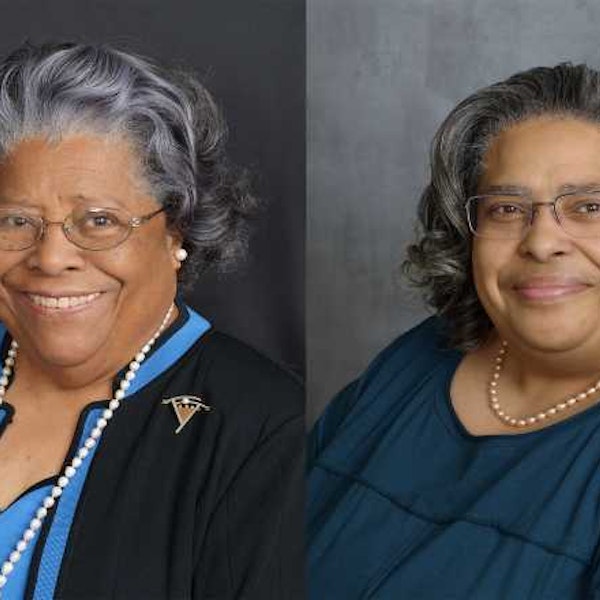African American Newspapers in Alton
Before today's instant communications and 24-hour news cycle, the only way to know what was going on in your neighborhood, state, or across the country and internationally was: to check in with the neighbor who knew all, be in the thick of the happenings, or read about it in a newspaper.
Historians and genealogists haunt these relics for evidence of individuals and families; economic, social, and cultural trends; geopolitical developments; and the occasional bit of gossip. In addition to the larger, mainstream weeklies and dailies, many newspapers focused on labor, politics, ethnicity, and community. One of the earliest (1862-1900) and believed to be the first to subsequently become a daily newspaper published by a Black man in Illinois was the Cairo Gazette. Such newspapers carried commentary on local, national, or international happenings but with the constituency's lens. Many of these papers are lost to history because they weren't published very long, had a small circulation, or simply because no one thought to save them for the legacy they offered.
Family stories suggest that from 1903 through 1925, Mary Anne Green Hindman wrote a recurring column with highlights from the Rocky Fork area of Godfrey, Illinois. Mrs. Hindman carefully cut and pasted articles, advertisements, and columns in a scrapbook saved by her family. Several pieces include Mrs. Hindman's byline and the column heading, "Godfrey, Illinois," but they do not carry the name or date of publication. Perhaps her column, full of personal tidbits and community happenings, was a regular feature of a newspaper for which there is no other record.
One such publication was that produced at St. John's Baptist Church in Alton, Illinois. The pastor from 1917 through 1984, Rev. Thomas P. Wright, studied printing at Shurtleff College. He employed this knowledge to print the church's bulletins, programs, and a weekly community newspaper. To encourage young people in the church to be informed about their community, Rev. Wright taught them how to run the press and other trade skills. No known copies of their efforts remain.
Another alumnus of Shurtleff College, Fred L. Penny, established a club at the Booker T. Washington Community Center focused on publishing a community newspaper. Established in 1936 by the Alton Negro Council and the city's Playground and Recreation Commission, the Center stood at 5th and Belle streets in Alton, Illinois. The newspaper club continued under Mr. Penny's direction after he became principal of Dunbar School (1937-39). No known copies or details exist related to the club's output.
By 1943, members of the Alton NAACP raised concerns about unfair, biased portrayals of the Black community in the Alton media. In answer, The Question newspaper (shown above) was created on September 1st with Harold D. Johnson, Editor, and Alton High School student, Conway K. Graves, first as Circulation Manager and then as Associate Editor. Several prominent African Americans served as directors of the publication and feature writers. Just a few issues of The Question are known to have been in the files of the Black Pioneers Committee of the Alton Museum of History and Art. In those pages are articles on community issues and African American Altonians serving in World War II.

The Madison County Courier began in 1985 with the following Editor's Note:
"This paper is being published in the hope that communications between these towns will be greater enhanced and the various communities of Alton, Godfrey, Madison, Edwardsville, and surrounding towns will be linked in a chain of information and ideas. It is hoped that this chain will serve to bring about the greater development of leadership and fellowship among its citizens.
It is The Courier's objective to publish a weekly newspaper that you feel is an asset to you and your community. Our objective is to bring to the forefront the positive things that are and can be found in our daily activities."
Once again, a small group came together to both highlight and inform their community. They were dedicated to reaching beyond the boundaries of individual towns to highlight a collective need. Lead by Editor Grace Monroe, a renowned educator and activist, The Courier, carried articles on local happenings, regional and national race politics. In less than a year, The Courier fell victim to financial issues and discontinued publication. Examples of these publications are held in local private collections.
Would that we had an uninterrupted view of how the African American community saw itself and its role in the larger community. Imagine the events, the people, the camaraderie, and the examples of patriotic citizenship lost to time. Likewise, imagine the student and scholar who at some distant time take in hand a copy of one of these gems and finds themselves. From such humble bits of paper and ink and dreams comes the legacy of people, time, and place.
About the Author

Charlotte E. Johnson & Reneé B. Johnson